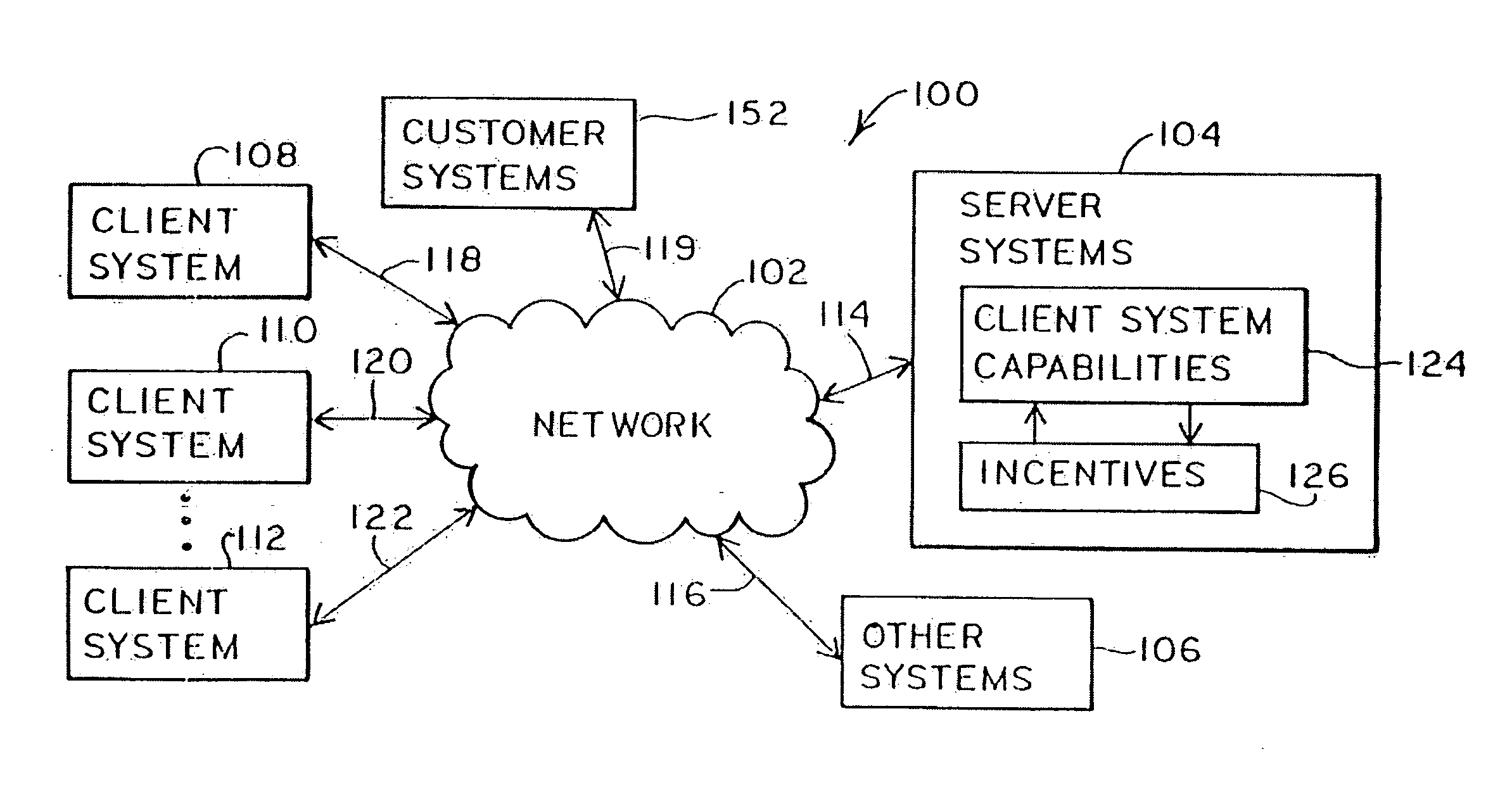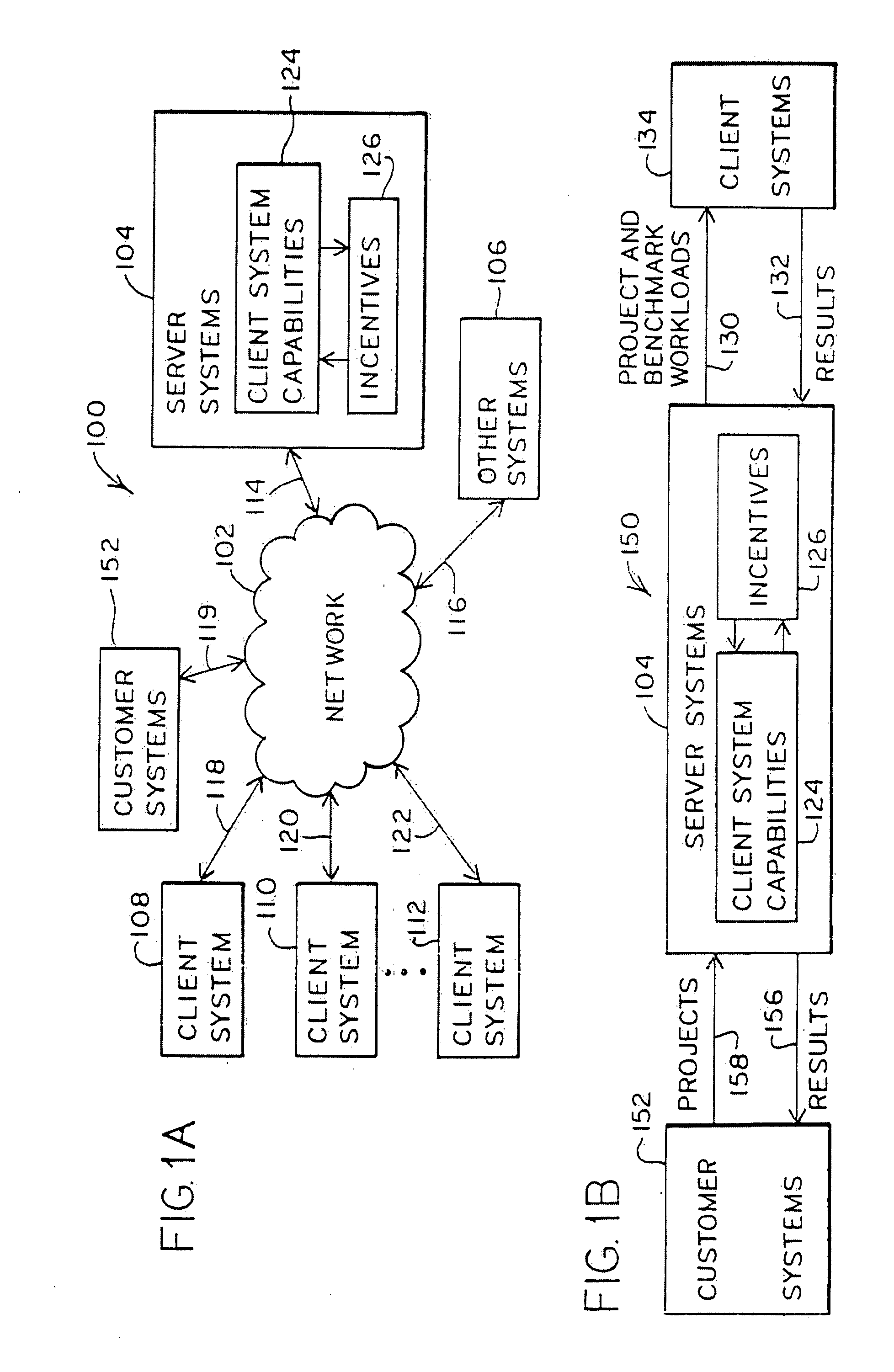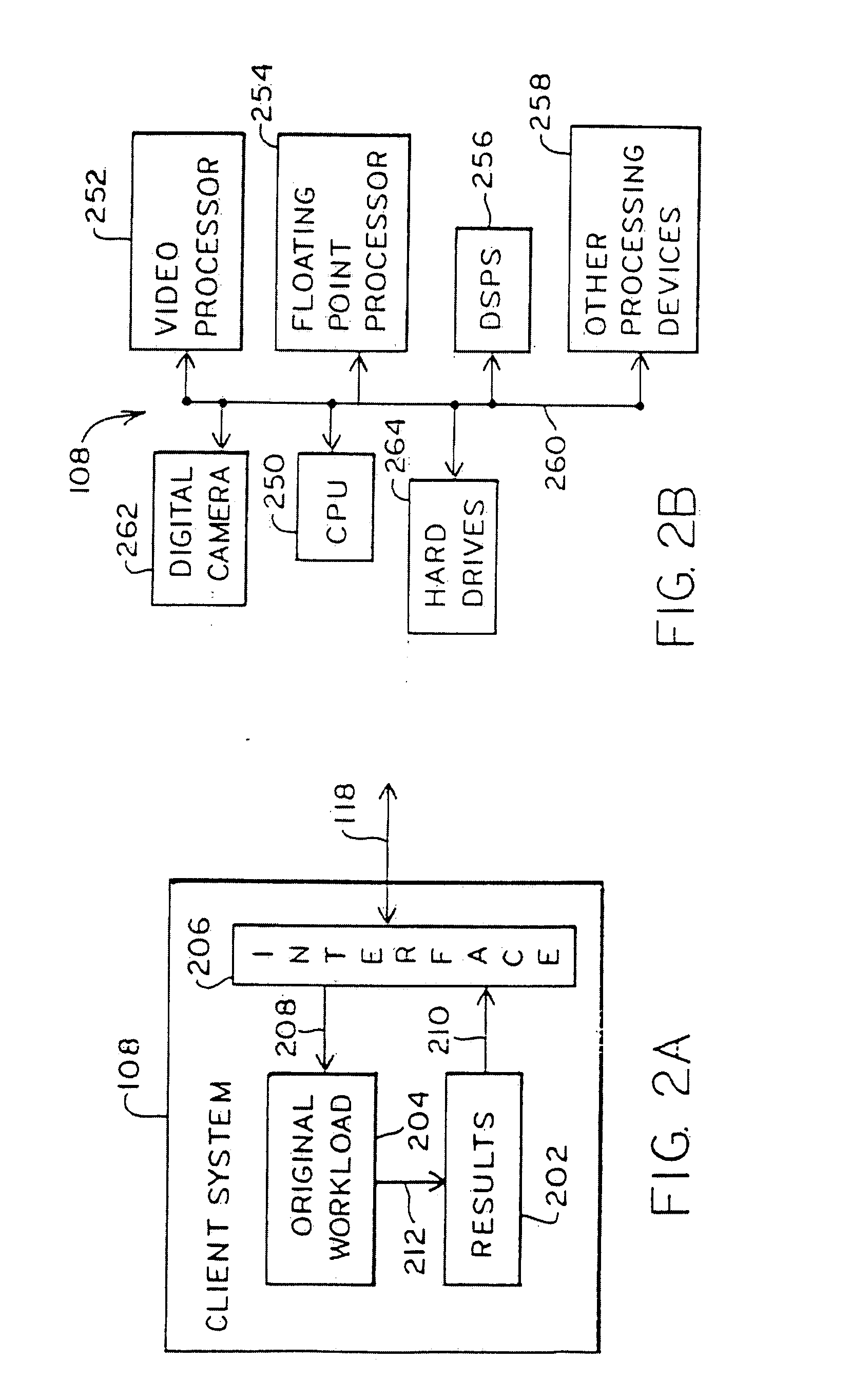Massively Distributed Processing System Architecture, Scheduling, Unique Device Identification and Associated Methods
a distributed processing and system architecture technology, applied in data processing applications, multiple digital computer combinations, computing, etc., can solve the problems of large processing power needed to analyze these data recordings, inefficient architecture, and often incurred costs for departments within the company relating to using processing time, etc., to achieve the effect of enhancing system operations and functionality
- Summary
- Abstract
- Description
- Claims
- Application Information
AI Technical Summary
Benefits of technology
Problems solved by technology
Method used
Image
Examples
embodiment 1600
[0165]Referring to FIG. 16, an embodiment 1600 of a distributed processing system is depicted. Server systems 104 include a security subsystem 354 through which communications to and from the server systems 104 may be made secure. Client systems 108A, 108B . . . 108C and client systems 108D, 108E . . . 108F represent any number of client systems that may communicate with server systems 104 or with each other. Each of the client systems 108A, 108B, 108C, 108D, 108E and 108F include a security subsystem 272A, 272B, 272C, 272D, 272E and 272F, respectively. The electronic information 1602 represents information that the server systems 104 is to communicate to client systems 108A, 108B, 108C, 108D, 108E and 108F in a secure manner, so that no unintended or intercepting recipient may understand or tamper with the electronic information 1602, and so that no third party may insert non-authorized information into the distributed processing system 1600. Although not shown, it is understood th...
embodiment 1800
[0177]FIG. 18A is a block diagram of an embodiment 1800 for security procedures implemented by server systems 104. Electronic information 1602 is to be communicated to a client system 108. This electronic information 1602 travels through four different paths that provide security information.
[0178]One path begins with the electronic information 1602 being encrypted with the server private key in block 1802. Then, in block 1830, the encrypted information is sent to client systems. This encrypted information is represented by arrow 1826.
[0179]A second path flows from block 1802 to block 1804 where a hash value is generated for the encrypted electronic information. It is noted that a hash value is a unique value that may be generated for any given electronic file based upon the contents of that file and the algorithm used to calculate the unique value. There are any number of algorithms that may be used to calculate a hash value, as would be understood by one of skill in the art. Proce...
embodiment 1850
[0182]Looking now to FIG. 18B, the corresponding security procedures implemented by a client system 108 are discussed with respect to embodiment 1850. Initially, in block 1854, the client system 108 receives CA certificate 1852 containing the server public key and the server identity. It is again noted that other unique identifiers may be utilized instead of CA certificates, as described above. If a CA certificate is utilized, this CA certificate may be provided from a third-party Certificate Authority (CA) or from the server systems 104 or any other desired source. In block 1856, the client system 108 verifies the accuracy of the CA certificate using the CA's public key. If this verification is not successful, the client system 108 may wait some period of time before retrying. In addition, the time period may be a random period of time. In addition, as discussed with respect to FIGS. 17A and 17B, the client system 108 will login to the server systems 104. If this authentication is ...
PUM
 Login to View More
Login to View More Abstract
Description
Claims
Application Information
 Login to View More
Login to View More - R&D
- Intellectual Property
- Life Sciences
- Materials
- Tech Scout
- Unparalleled Data Quality
- Higher Quality Content
- 60% Fewer Hallucinations
Browse by: Latest US Patents, China's latest patents, Technical Efficacy Thesaurus, Application Domain, Technology Topic, Popular Technical Reports.
© 2025 PatSnap. All rights reserved.Legal|Privacy policy|Modern Slavery Act Transparency Statement|Sitemap|About US| Contact US: help@patsnap.com



